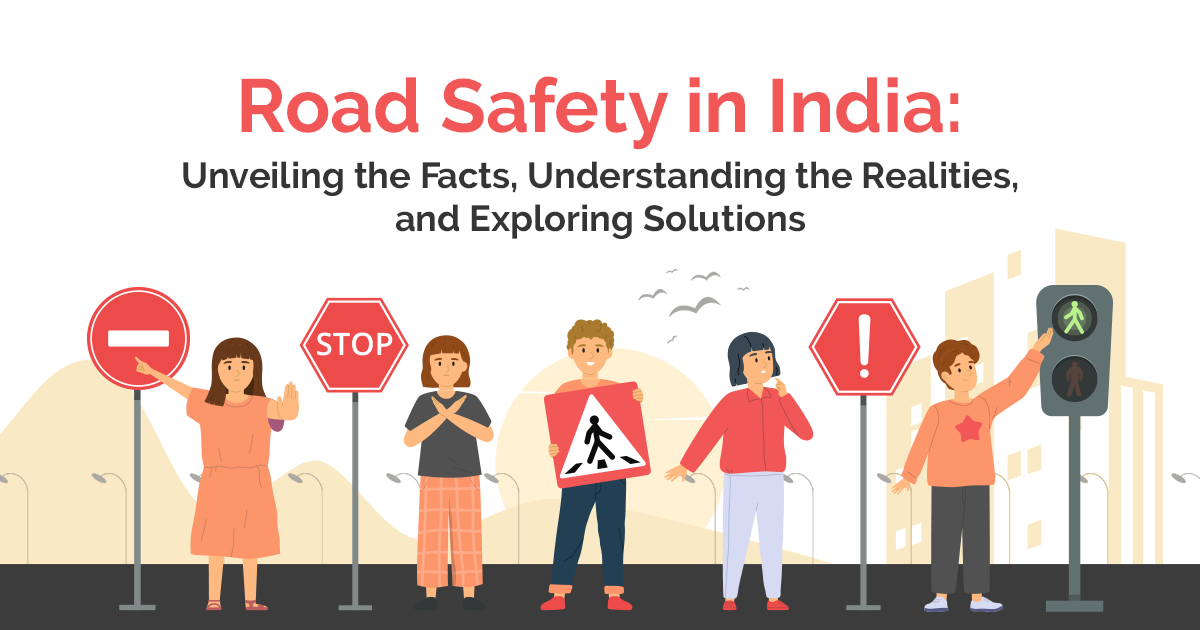Road Safety in India: Unveiling the Facts, Understanding the Realities, and Exploring Solutions

India’s roads are vital lifelines, connecting communities, powering the economy, and facilitating mobility for over a billion people. However, beneath this dynamic infrastructure lies a harsh truth: road accidents claim more than 150,000 lives annually, placing India among the most unsafe countries for road users. Addressing this challenge requires acknowledging the gravity of the problem, understanding the reasons behind it, and implementing effective solutions. This blog delves into the key facts, the pressing realities, and actionable strategies to enhance road safety in India.
The Stark Realities: Facts About Road Safety in India
1. High Fatality Rate
- India accounts for nearly 11% of global road accident fatalities, despite having just 1% of the world’s vehicles.
- Over 400 deaths occur daily due to road accidents, making it one of the leading causes of death in the country.
2. Vulnerable Road Users
- Pedestrians, cyclists, and two-wheeler riders constitute more than half of the fatalities.
- Children are particularly at risk, with over 42 young lives lost every day due to road crashes.
3. Economic Impact
- Road accidents cost the Indian economy nearly 3% of its GDP annually.
- The burden includes medical expenses, loss of productivity, and emotional trauma for families.
4. Regional Disparities
- Urban areas witness higher accident rates due to traffic density, while rural regions face higher fatality rates due to delayed medical response.
Why Is India Struggling with Road Safety?
1. Infrastructure Gaps
- Poorly designed roads, lack of pedestrian pathways, and inadequate traffic signage contribute to accidents.
- Absence of dedicated lanes for cyclists and two-wheelers increases risks.
2. Human Error
- Speeding, drunk driving, and distracted driving remain leading causes of road crashes.
- Non-compliance with basic safety measures like wearing helmets and seat belts exacerbates the problem.
3. Inadequate Enforcement
- Weak enforcement of traffic laws allows violations to persist.
- Corruption and lack of resources hinder the implementation of existing regulations.
4. Limited Awareness
- Many road users are unaware of traffic rules and the importance of safety practices.
- Cultural attitudes often prioritize convenience over compliance.
How Can We Improve Road Safety?
1. Stronger Policies and Enforcement
- Motor Vehicles (Amendment) Act, 2019: This act has introduced higher penalties for violations, but consistent enforcement is key.
- Use of technology like automated traffic monitoring and AI-based solutions can ensure accountability.
2. Infrastructure Improvements
- Build safer roads with proper markings, lighting, and signage.
- Develop pedestrian-friendly pathways and segregated lanes for vulnerable road users.
3. Behavioral Change Initiatives
- Conduct nationwide campaigns to educate people on the importance of following traffic rules.
- Engage schools, colleges, and workplaces in spreading road safety awareness.
4. Emergency Response Systems
- Strengthen post-accident care by equipping highways with emergency medical facilities and training first responders.
- Promote the Good Samaritan Law to encourage bystanders to assist accident victims without fear.
5. Collaboration and Accountability
- Encourage partnerships between governments, NGOs, and private organizations to address road safety challenges collaboratively.
- Involve communities in local traffic management and safety awareness drives.
The Role of Individuals in Road Safety
While systemic changes are essential, road safety begins with individual responsibility. Simple actions like wearing helmets, avoiding distractions, and adhering to speed limits can save lives. Parents, teachers, and community leaders can also play a pivotal role in shaping safer behaviors among young road users.
Conclusion
Road safety in India is a multifaceted challenge that demands urgent attention. By addressing infrastructure gaps, enforcing laws, fostering awareness, and encouraging behavioral change, we can make meaningful strides toward safer roads. Every life saved is a step closer to a more secure and prosperous nation.
Let us unite as a society to prioritize road safety. Together, we can turn the tide on this pressing issue and ensure that our roads become paths of progress, not peril.